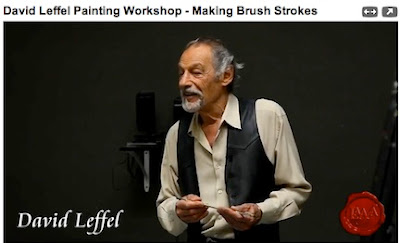
Daily painter Carol Marine creates a small still life painting, of a bell pepper, in the instruction video Carol Marine Daily Painting Demo. She paints on a canvas with a yellow underpainting, and begins by making marks indicating the outer edges of the pepper and its shadow. Next, she draws in the shapes of her composition. Nice use of the negative space, isn't it?

Once her composition is laid out, she begins blocking in the big shapes of her painting, both in the positive and negative space.
She paints quickly (she's had a lot of practice). Notice how she uses her brush strokes in the negative space to help define the positive shapes?

Notice how she moves from larger shapes to smaller ones as she develops the painting? The lovely details of highlights and small shadows on the pepper and its stem work well, because the structure of the composition underneath it works.
You can see more of her artwork online at bluecloudstudios.com, and you can read her blog at carolmarine.blogspot.com.











